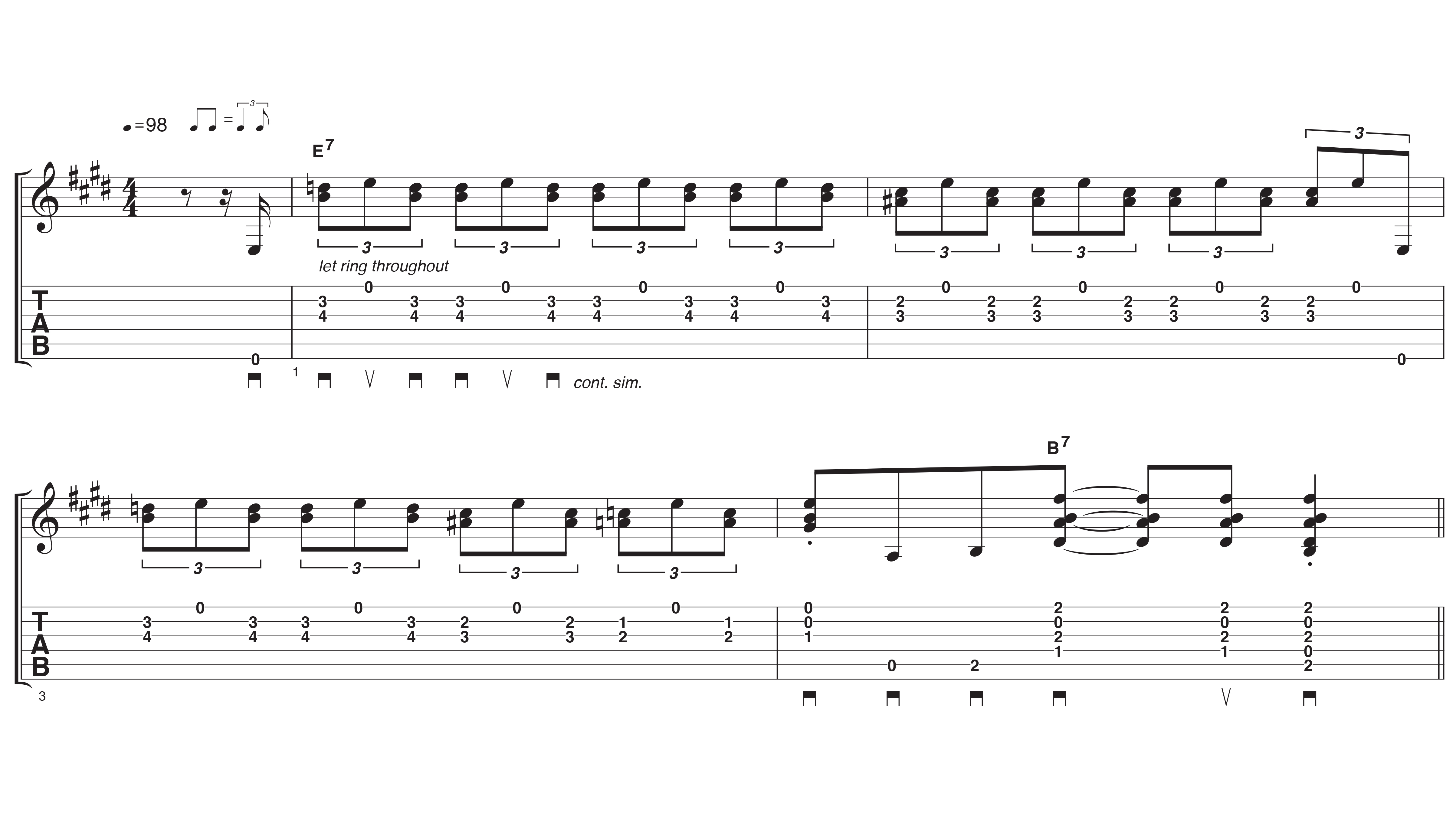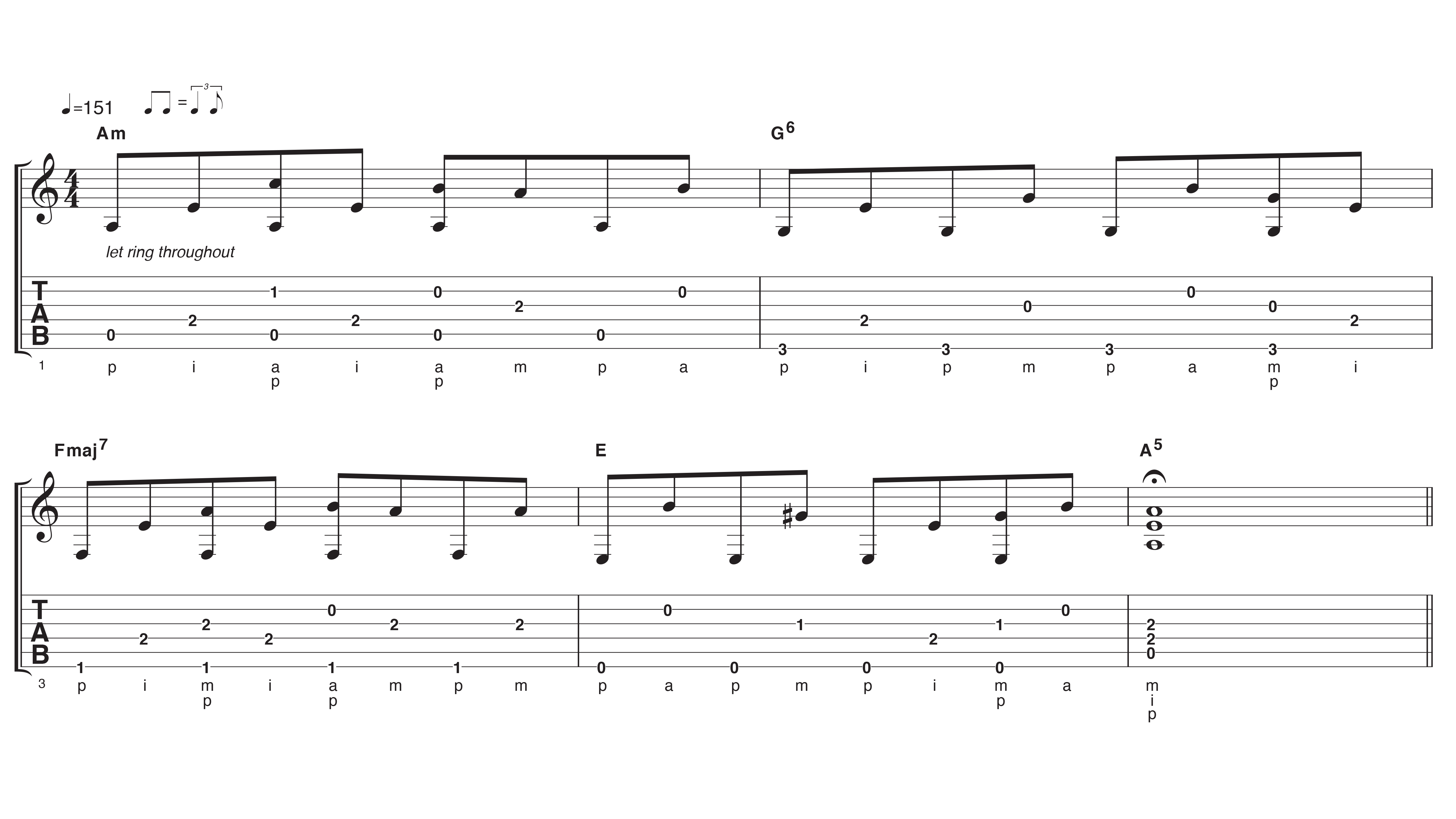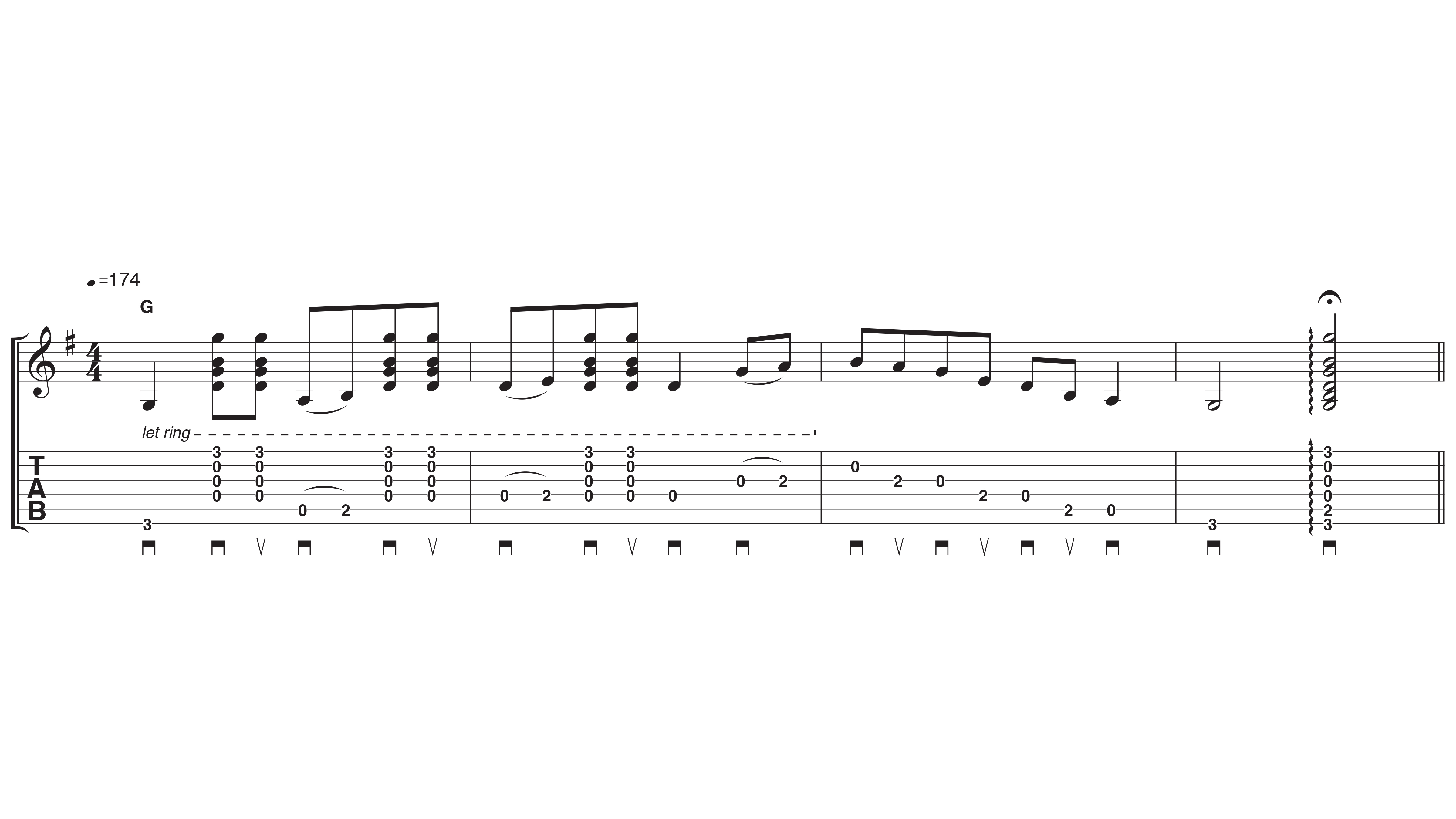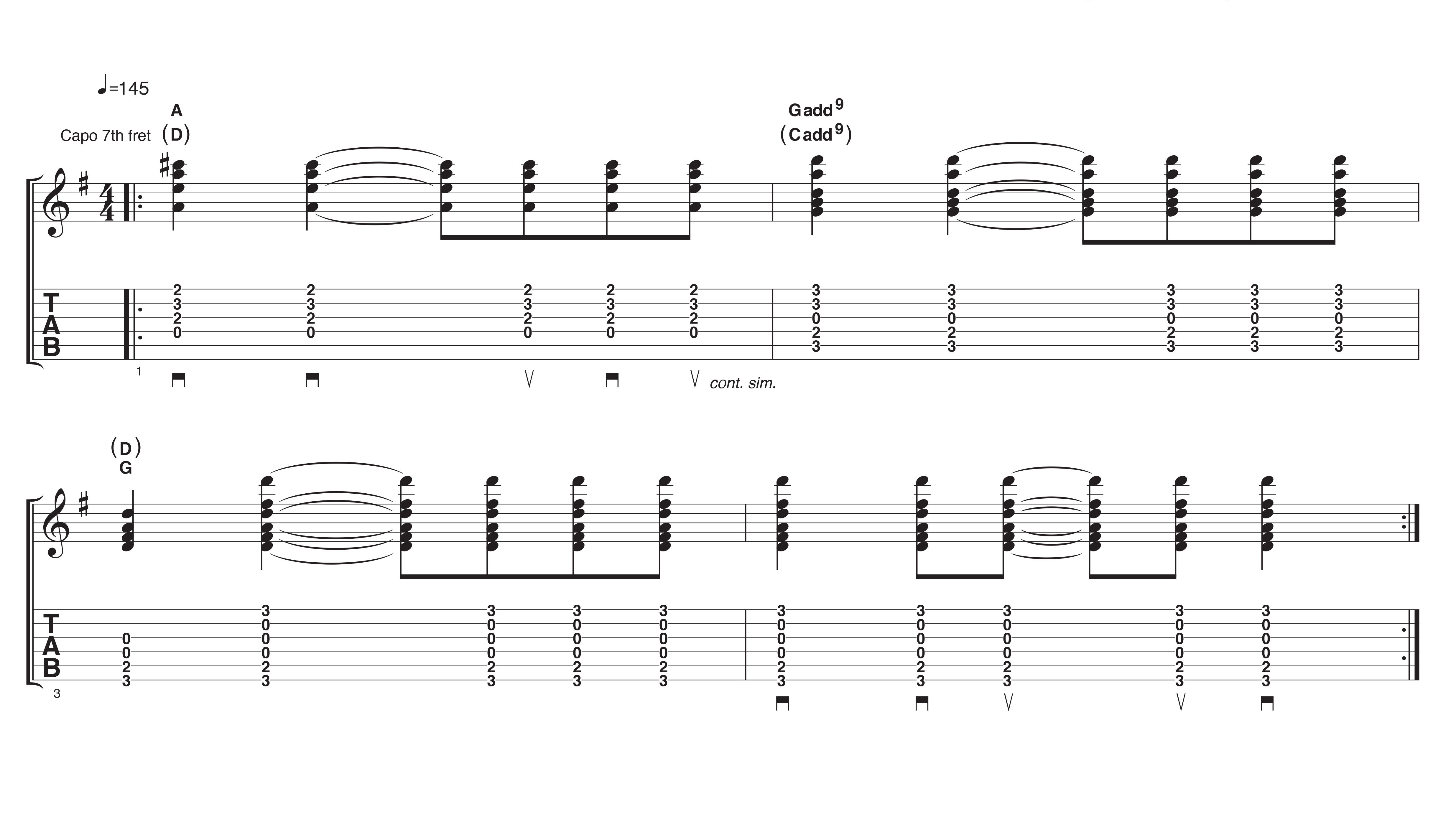Get adventurous with your acoustic guitar and try our taster menu of lessons with 7 different playing styles
Including delta blues, gypsy jazz, country, medieval, folk and bluegrass

There’s much to be gained from trying your hand at different styles of music. Aside from potential improvements to your technique from the challenge of playing new music, you’ll be training your ear as you listen to material that might be off your radar.
Here, our aim is to help you get to grips with some basic elements of a handful of different styles of acoustic guitar playing. It’s far from extensive, so treat these as bite-sized ideas that you can develop your own music around.
1. Country groove
Click on top right of tab for full screen view
For things like this, it’s important to be organised about which picking hand fingers play which string and develop a routine. Here, the thumb plays the bass notes and the first three fingers of the picking hand are assigned to the three treble strings.
As you develop more complex patterns, you might benefit from deviating from this routine slightly, but this is the foundation of fingerstyle – a platform from which to continue to greater things!
2. Delta blues intro
Click on top right of tab for full screen view
This Robert Johnson-style intro lick has become such a staple in both electric and acoustic blues since it first appeared on record in the early 20th century. Notice the brief statement of the root note on the sixth string E note before each two-bar phrase, giving a clear context for what follows.
Want all the hottest music and gear news, reviews, deals, features and more, direct to your inbox? Sign up here.
This technique allows more complex parts to be played without the need to be constantly holding down a full chord.
3. Gypsy jazz vamp
Click on top right of tab for full screen view
This rhythmic chord style is the driving force behind Parisian ‘gypsy’ style swing jazz. Swing and jazz chords are very different to country, blues and rock. Instead of the open, ringing voicing of these styles, these chords are usually just three or four notes, with any unwanted strings muted out.
In this plectrum-strummed example, the fifth string is hardly used at all. Check out Biréli Lagrène, Remi Harris, Jimmy Rosenberg or early pioneer Django Reinhardt for inspiration.
4. British folk
Click on top right of tab for full screen view
During the mid/late 1960s, the acoustic guitar played a major part in a folk revival. Players like Bert Jansch took the art of creating self-contained rhythmic and melodic parts to a new level.
It might be easiest to view this as a melody with a separate bassline played with the thumb and lightly palm-muted to give extra clarity and ‘thump’. Use the first three fingers of your picking hand to play the melody/chords on the second and third strings.
5. Medieval
Click on top right of tab for full screen view
The acoustic guitar has origins stretching back centuries, and this example is inspired by the lute music of medieval times. Also, by the revival in this style inspired by players such as John Renbourn – though even Ritchie Blackmore and Jimmy Page have been interested in this style.
The opening chords in bars 1, 2 and 3 use the thumb and first three fingers in quick succession to spell out the shape. In bar 4, simply strum gently downwards with your first finger.
6. Flat-picked bluesgrass
Click on top right of tab for full screen view
Using a pick generally gives greater volume and projection, plus opens up greater possibilities for playing rapid-fire runs of notes. The first part of this example plays a melody on the bass notes.
Between the bass notes, the pick is used to strum lightly on the treble strings, giving a self-contained musical and rhythmic arrangement. The single note line that finishes the piece is played with alternating down and upstrokes of the pick.
7. Modern indie-folk
Click on top right of tab for full screen view
Using a capo at the 7th fret gives an almost ukulele style effect – especially if you confine your playing to the higher pitched strings. This works well on its own (as in our audio example) or as an overdub over another lower-pitched acoustic guitar part, giving a complex ‘layered’ sound.
The regular strumming pattern is also an important ingredient, calling rhythmic ukulele playing to mind. Using a lighter pick can also thin out the tone a little, which is ideal for what we’re going for here.
30 acoustic guitar chords you need to know
MusicRadar is the number one website for music-makers of all kinds, be they guitarists, drummers, keyboard players, DJs or producers...
- GEAR: We help musicians find the best gear with top-ranking gear round-ups and high-quality, authoritative reviews by a wide team of highly experienced experts.
- TIPS: We also provide tuition, from bite-sized tips to advanced work-outs and guidance from recognised musicians and stars.
- STARS: We talk to musicians and stars about their creative processes, and the nuts and bolts of their gear and technique. We give fans an insight into the craft of music-making that no other music website can.







